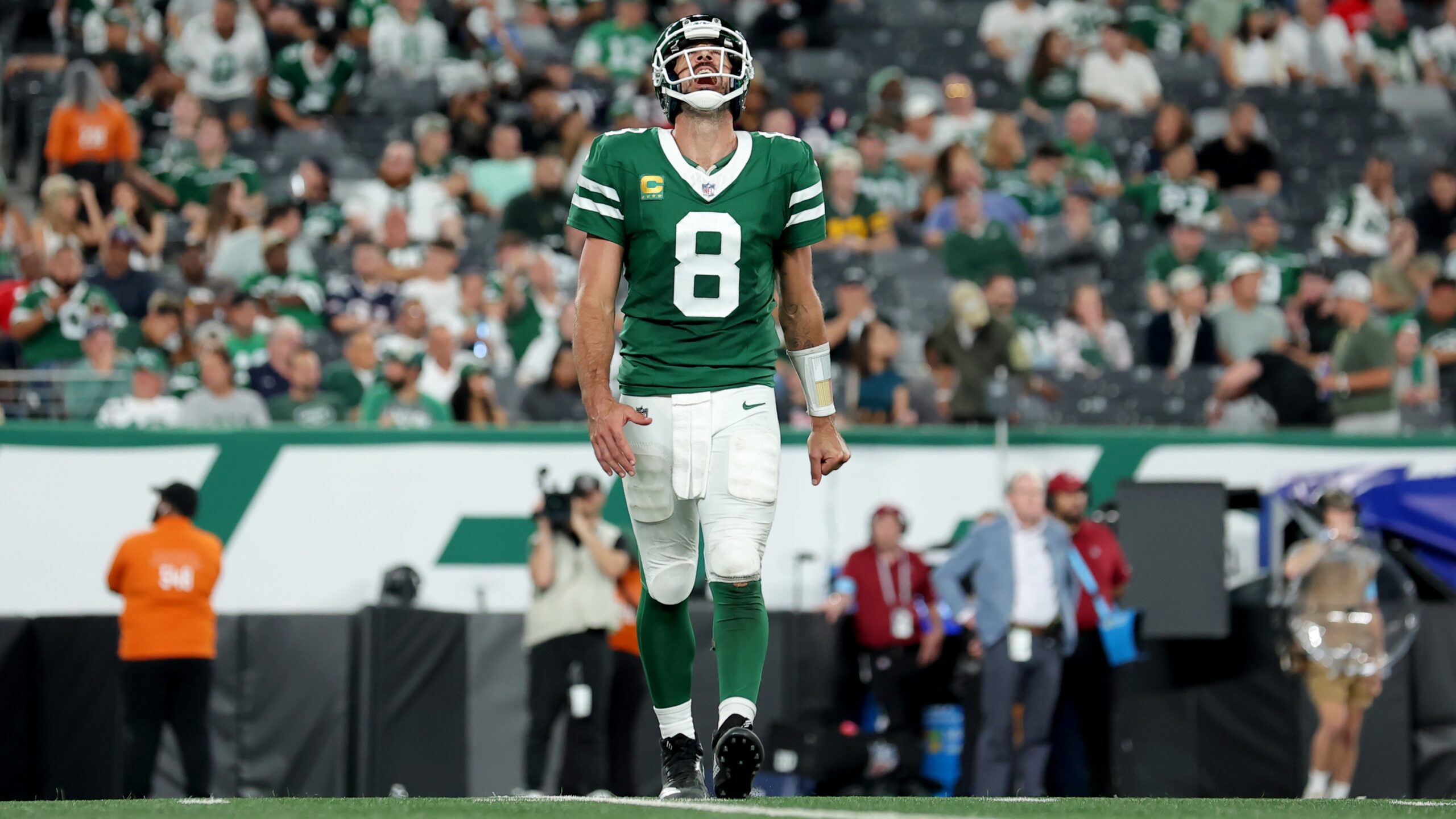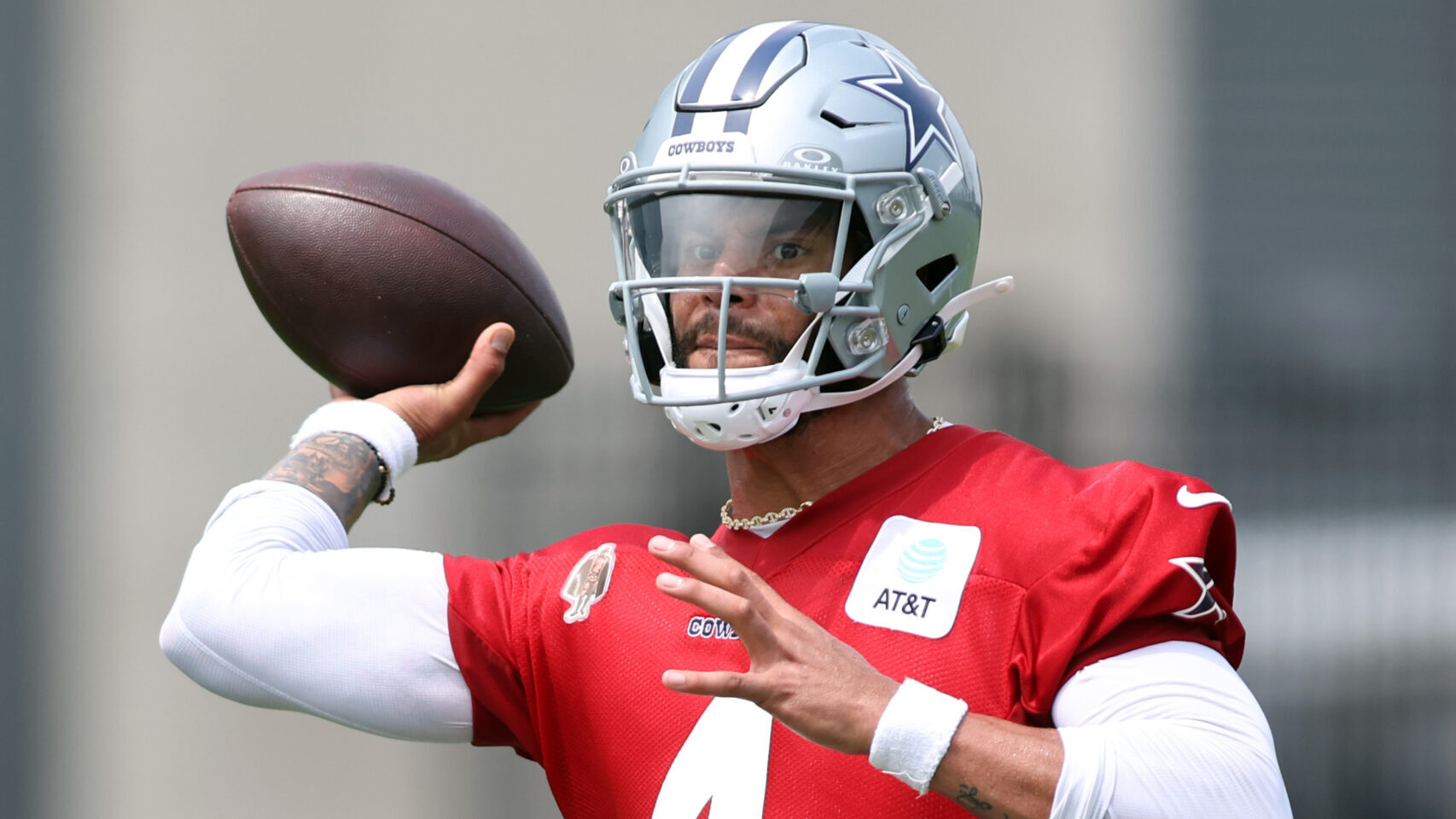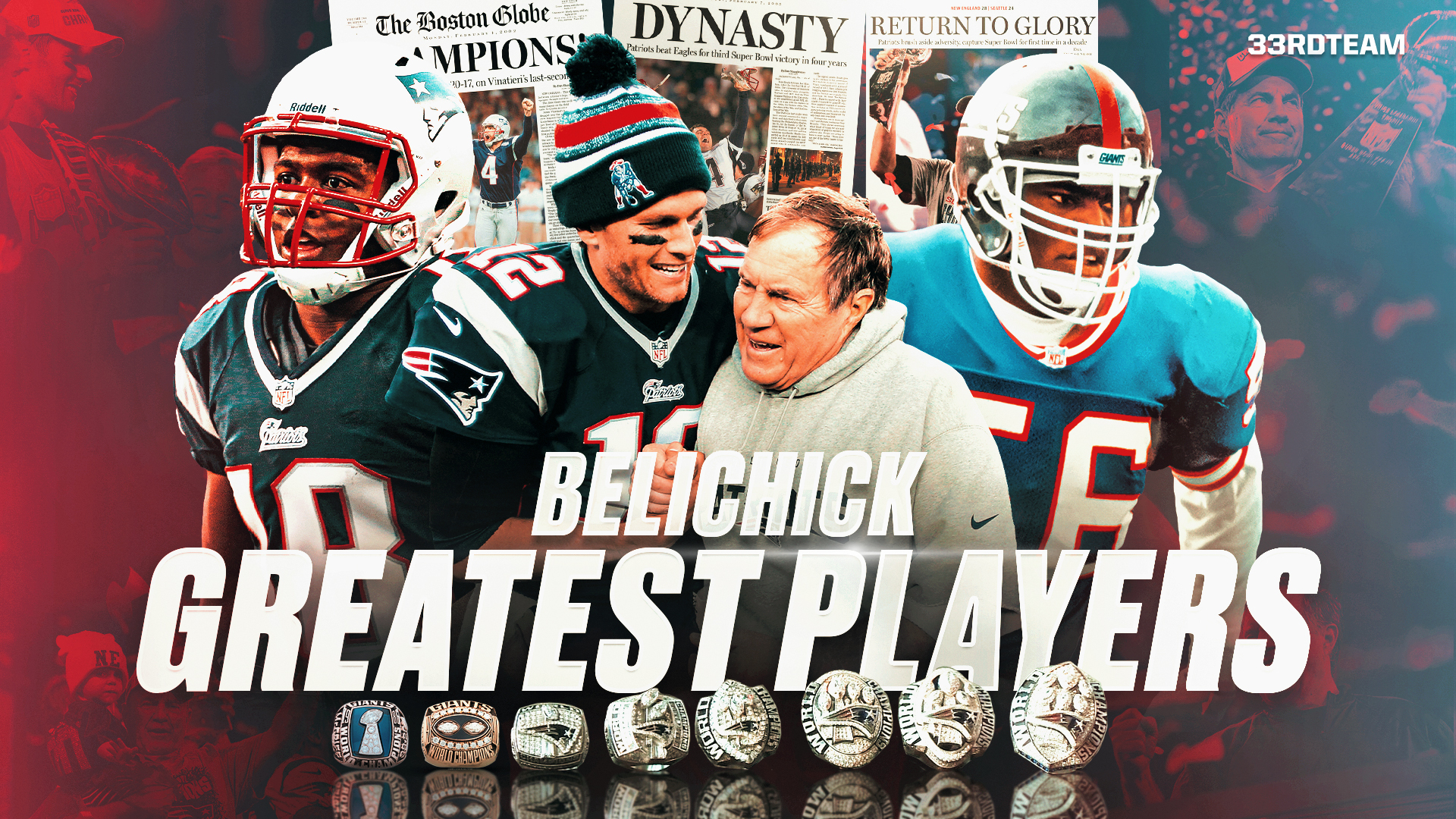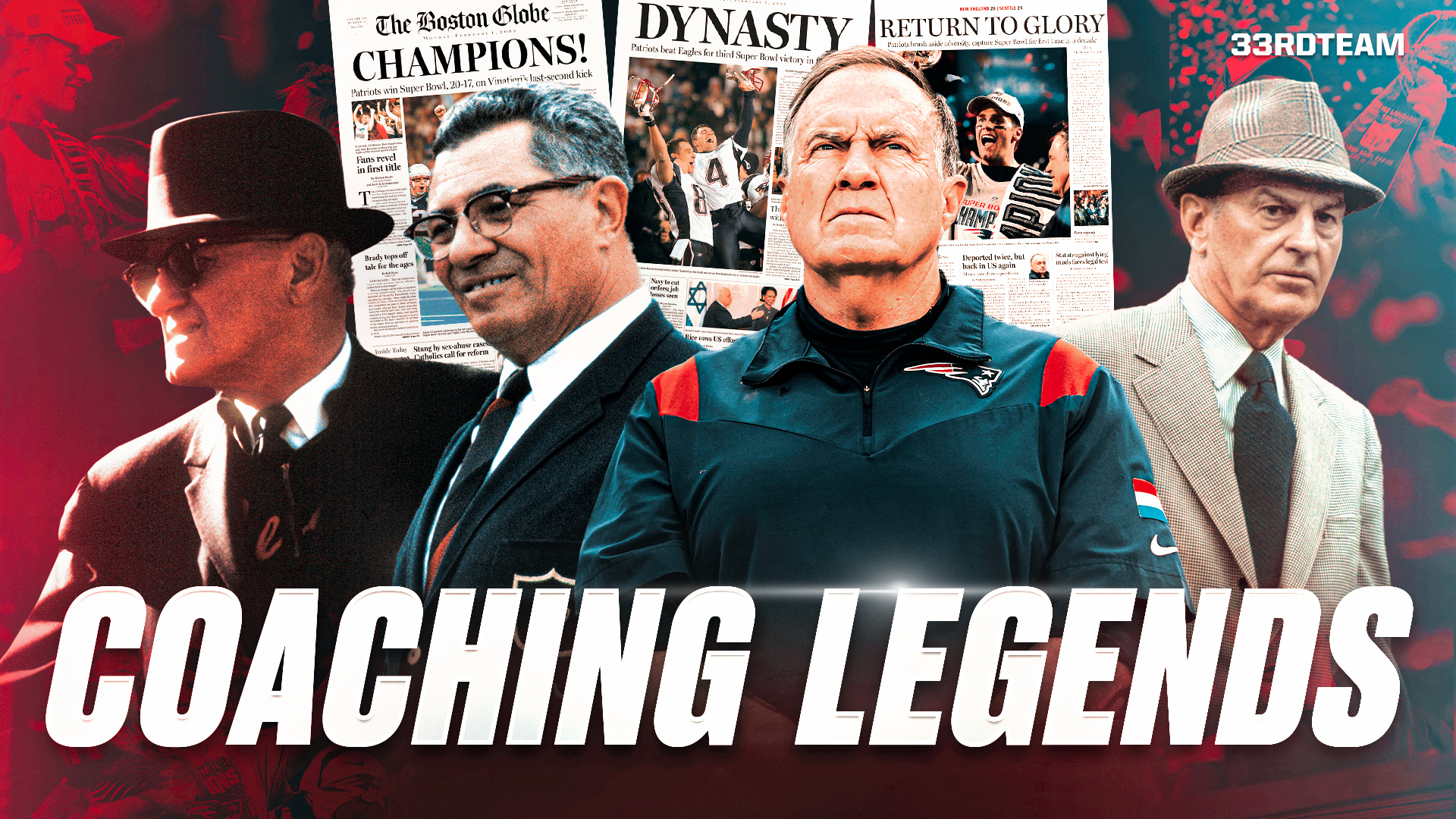Analysis
2/9/23
7 min read
How Eagles, Chiefs' Receivers Set Course for Super Bowl LVII
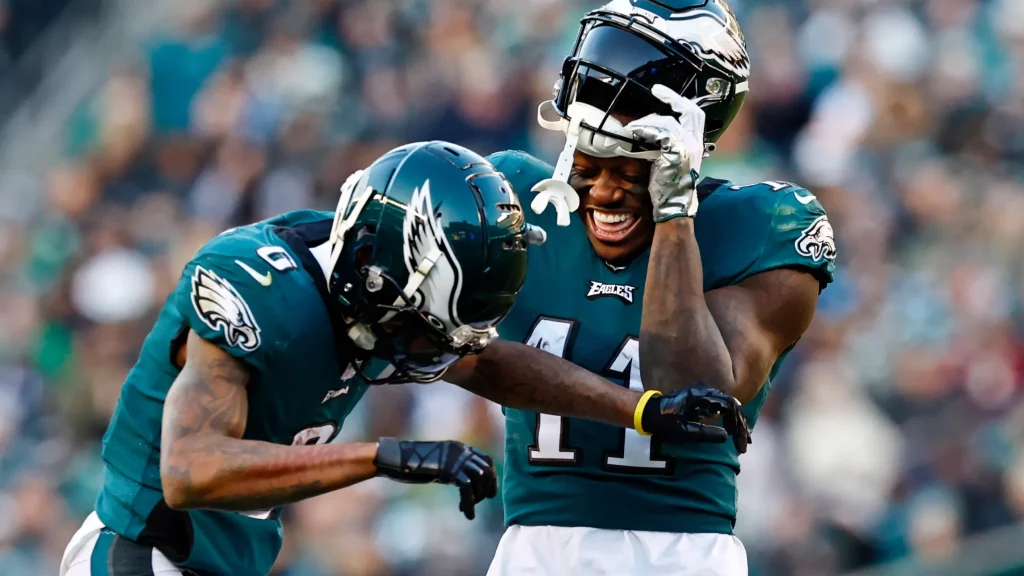
A major catalyst for the flight to Sunday’s Super Bowl by the Philadelphia Eagles and Kansas City Chiefs was the air game.
Each team approached that portion of its team in opposite ways. Yet both prospered in the short term and, likely, for the long run.
A deep dive into how Philadelphia general manager Howie Roseman and his Kansas City counterpart, Brett Veach, handled the wide receiver position exhibits how contrary circumstances can be. It also shows how two diametrically opposite approaches can work.
[bc_video video_id="6319732331112" account_id="6312875271001" player_id="default" embed="in-page" padding_top="56%" autoplay="" min_width="0px" playsinline="playsinline" picture_in_picture="" language_detection="" max_width="640px" mute="" width="100%" height="100%" aspect_ratio="16:9" sizing="responsive" ]
A.J. Brown Was Eagles' Final Piece
As Philadelphia began its turnaround in 2021, seeing improvement from previously untested quarterback Jalen Hurts and upgrades in the running game and at tight end, it became clear the missing piece was a dynamic wideout. While first-round draft pick DeVonta Smith had a solid rookie season, he was better suited as a 1A if the Eagles could land a No. 1 target.
They found him in Tennessee, acquiring A.J. Brown.
“That was a game changer for them,” said former NFL executive Rick Spielman, an analyst for The 33rd Team. “I think they wouldn’t be where they are at without that trade.
“We’re seeing in the NFL how these No. 1 receivers can take over a game a la Justin Jefferson. Getting Brown, it put a piece in place they didn’t have, a dominant receiver like that. When you do that, it changed their whole season, and it made Hurts a much better quarterback because now he had a true No. 1 receiver he could rely on. If you don’t have that caliber of receiver, those passes he catches wind up being interceptions or incompletions.”
Brown was the perfect addition, and it’s not just the impressive stats – 88 receptions, 1,496 yards, 11 touchdowns – that display that. It’s the way Brown plays the position
“He brings a real physicality, a guy who can win one-on-one outside the numbers with speed and size,” noted former NFL executive Mike Tannenbaum, an analyst for The 33rd Team. “He creates problems because you have to shade a safety to his side, and Brown is very physical in the run game. This is a front-line difference-maker.
“DeVonta Smith will rely on his speed, but when teams game plan, they must game plan first for Brown. They may make the decision in defensive meetings that if Smith beats us, he beats us, we can’t let Brown beat us. So it frees up others like Smith and Dallas Goedert.”
Another boost from bringing in Brown: Philly’s run game can’t draw as much attention from defenses as it once did. Coach Nick Sirianni and coordinator Shane Steichen masterfully have balanced the offense that operates behind the best blocking unit in football.
[bc_video video_id="6319896056112" account_id="6312875271001" player_id="default" embed="in-page" padding_top="56%" autoplay="" min_width="0px" playsinline="playsinline" picture_in_picture="" language_detection="" max_width="640px" mute="" width="100%" height="100%" aspect_ratio="16:9" sizing="responsive" ]
The biggest boost? That was felt by Hurts, a finalist for league MVP.
“Jalen Hurts also was a huge beneficiary of Brown’s presence as his passing yards increased by 557, his TD passes were up by six, and his passer rating went up 14 points,” added former NFL executive Jeff Diamond, also an analyst for The 33rd Team. “While defenses were being primarily concerned with covering Brown and Smith in the passing game, it helped Hurts’ rushing production continue to be a huge factor.”
Hurts rushed for 760 yards and a stunning 13 TDs despite missing two games with a shoulder injury.
“Brown clearly was a key factor in the Eagles going from a 9-8 (wild-card) playoff team with a quick first-round exit to NFC champs at 14-3 plus two playoff wins leading into the Super Bowl,” Diamond concluded.
Chiefs' Trade of Hill Yielded Multiple Useful Pieces
Kansas City had its superstar receiver in game-breaking Tyreek Hill. But when the monetary commitment to keeping Hill as Patrick Mahomes’ deep threat became relevant in the offseason – and with the way receivers’ salaries have skyrocketed – the Chiefs looked at other options.
What they found was, in their opinion, worth the gamble, and they traded Hill to Miami for five draft picks: a first-rounder, a second-rounder, two fourths and a sixth.
“That was a huge trade for both teams,” Spielman explained. “Miami benefited from it although it gave up a significant amount of compensation, and Kansas City used a lot of that draft capital to move around, first to get (cornerback) Trent McDuffie in the draft, and they also got (receiver) Skyy Moore. They were able to put some young building blocks on the team, and because of the financial package Miami put together for Hill that they weren’t going to match, it helped the Chiefs to have enough cash and cap space to keep other core guys.
“When you have to make decisions like that, I believe they probably knew they wouldn’t be able to get the contract done because of the compensation Tyreek was looking for.”
Still, there was a gaping hole in the offense without Hill. Of course, Travis Kelce, the best tight end in the business, was still around, but the wide receiving corps was no longer as dangerous. And Mahomes no longer had that reliable big-play wideout opponents feared downfield.
[bc_video video_id="6319941677112" account_id="6312875271001" player_id="default" embed="in-page" padding_top="56%" autoplay="" min_width="0px" playsinline="playsinline" picture_in_picture="" language_detection="" max_width="640px" mute="" width="100%" height="100%" aspect_ratio="16:9" sizing="responsive" ]
So the Chiefs had some work to do. While nobody will claim JuJu Smith-Schuster, Marquez Valdes-Scantling, or Kadarius Toney is the second coming of Hill, their additions have been essential in the push toward another championship.
“It speaks to the brilliance of Patrick Mahomes and Andy Reid, along with Brett Veach, that the Chiefs remade their wide receiver corps,” Diamond said.
Smith-Schuster had 78 catches for 933 yards and three touchdowns, Valdes-Scantling made 42 receptions for 687 yards and two TDs – he had a huge AFC title game, too – and Moore made 22 catches for 250 yards. Toney was a late newcomer whose role is developing, but he isn’t exactly ignored in the versatile attack.
“Kansas City also got younger in this transformation, with the 22-year-old Moore and 24-year-old Toney added to the receiver mix along with Smith-Schuster at 26 years old,” added Diamond, pointing out that Hill turns 29 next month. ”Kelce helped make up for the slight drop-off in receiving yards at wide receiver with his production increasing by 18 catches, 213 yards and three TDs.”
Tannenbaum points out another positive for KC from the Hill trade.
“It’s one of the trades you like to see as a win/win and helped both teams,” he said. “Miami got a No. 1 receiver, and from the resource allocations, it helped Kansas City rebuild on the fly and especially rebuild the defense that also has gotten them this far.”
And there is this: The Chiefs saved about $12 million in 2022 cash expended with the departures of Hill, Byron Pringle and Demarcus Robinson at the position.
Barry Wilner was been a sportswriter for the Associated Press for 40 years. He has covered virtually every major sporting event, including 13 Olympics, 9 World Cups, 30 Super Bowls, the World Series, and the Stanley Cup Finals, and has written 52 books. Follow him on Twitter @Wilner88.
WATCH: Inside Look at Super Bowl Week
[bc_video video_id="6319896056112" account_id="6312875271001" player_id="default" embed="in-page" padding_top="56%" autoplay="" min_width="0px" playsinline="playsinline" picture_in_picture="" language_detection="" max_width="640px" mute="" width="100%" height="100%" aspect_ratio="16:9" sizing="responsive" ]


